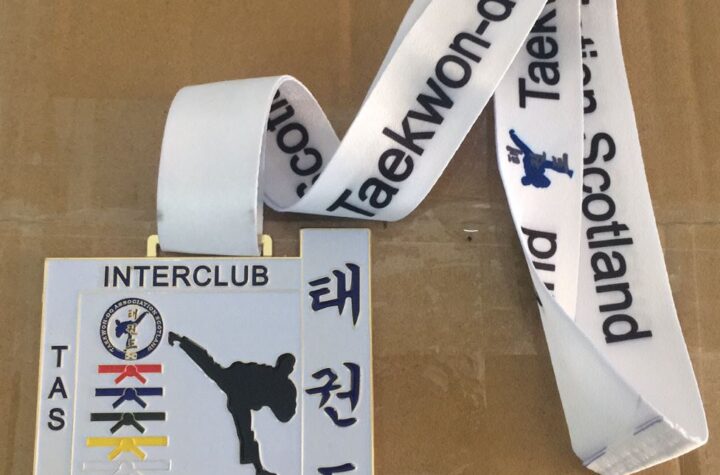Pattern Definition & Diagram
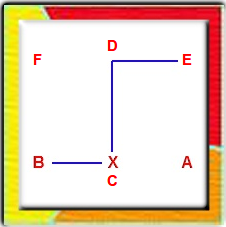
(24 Movements). Do-San is the pseudonym of the patriot An Chang-Ho (1876-1938), who devoted his entire life to furthering the education of Korea and it’s independent movement.
Click the “next” and “previous” arrows on the image below to step through this pattern.
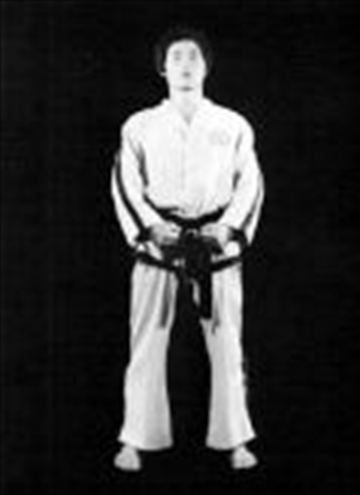
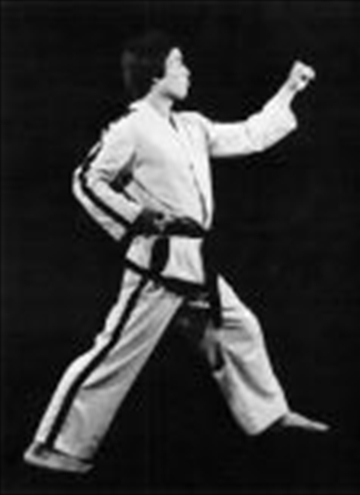 Move the left foot to B, forming a left walking stance toward B while executing a high side block to B with the left outer forearm
Move the left foot to B, forming a left walking stance toward B while executing a high side block to B with the left outer forearm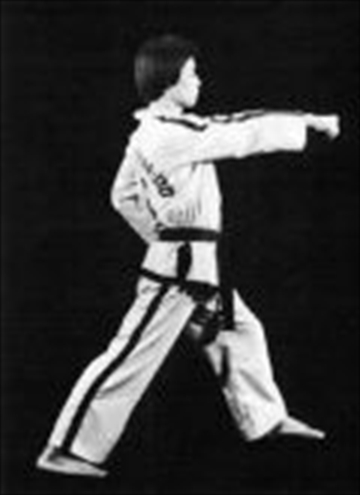 Execute a middle punch to B with the right fist while maintaining a left walking stance toward B
Execute a middle punch to B with the right fist while maintaining a left walking stance toward B Move the left foot on the AB line, and then turn clockwise to form a right walking stance toward A while executing a high side block to A with the right outer forearm
Move the left foot on the AB line, and then turn clockwise to form a right walking stance toward A while executing a high side block to A with the right outer forearm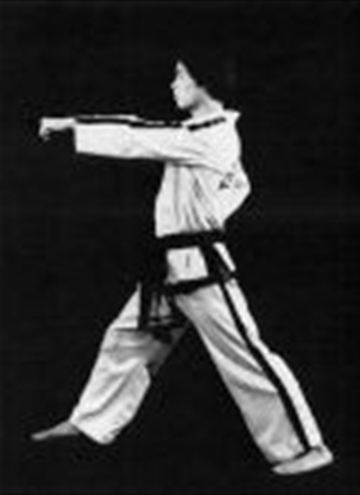 Execute a middle punch to A with the left fist while maintaining a right walking stance toward A
Execute a middle punch to A with the left fist while maintaining a right walking stance toward A Move the left foot to D, forming a right L stance toward D while executing a middle guarding block to D with a knifehand
Move the left foot to D, forming a right L stance toward D while executing a middle guarding block to D with a knifehand Move the right foot to D, forming a right walking stance toward D while executing a middle thrust to D with the right straight fingertip
Move the right foot to D, forming a right walking stance toward D while executing a middle thrust to D with the right straight fingertip 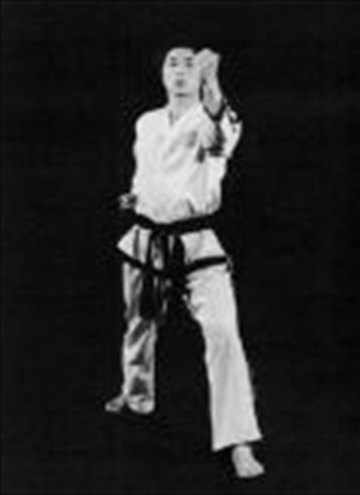 Twist the right knifehand together with the body counter clockwise until the palm faces downward and then move the left foot to D, turning counter clockwise to form a left walking stance toward D while executing a high side strike to D with the left back fist
Twist the right knifehand together with the body counter clockwise until the palm faces downward and then move the left foot to D, turning counter clockwise to form a left walking stance toward D while executing a high side strike to D with the left back fist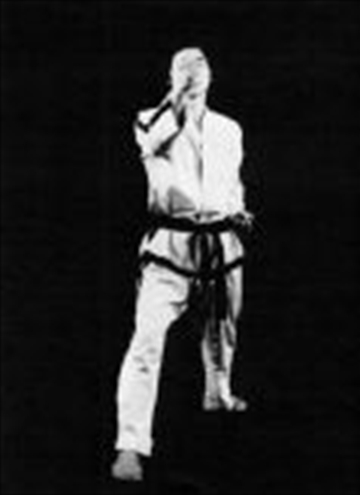 Move the right foot to D, forming a right walking stance toward D while executing a high side strike to D with the right back fist
Move the right foot to D, forming a right walking stance toward D while executing a high side strike to D with the right back fist Move the left foot to E, turning counter clockwise to form a left walking stance toward E while executing a high side block to E with the left outer forearm
Move the left foot to E, turning counter clockwise to form a left walking stance toward E while executing a high side block to E with the left outer forearm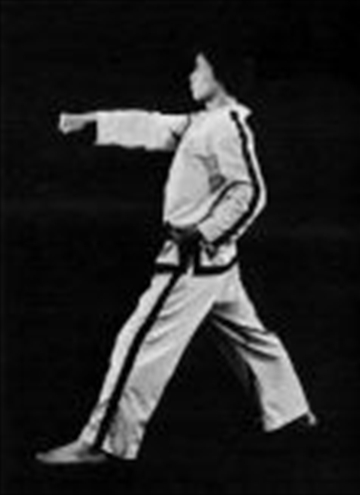 Execute a middle punch to E with the right fist while maintaining a left walking stance toward E
Execute a middle punch to E with the right fist while maintaining a left walking stance toward E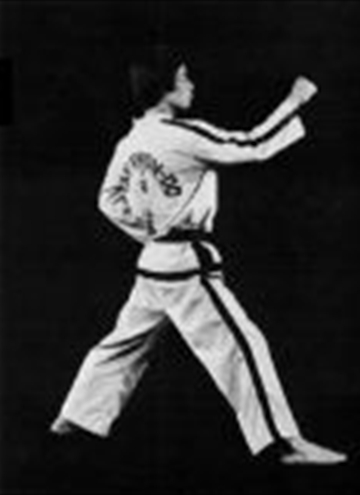 Move the left foot on line EF, and then turn clockwise to form a right walking stance toward F while executing a high side block to F with the right outer forearm
Move the left foot on line EF, and then turn clockwise to form a right walking stance toward F while executing a high side block to F with the right outer forearm Execute a middle punch to F, with the left fist while maintaining a right walking stance toward F
Execute a middle punch to F, with the left fist while maintaining a right walking stance toward F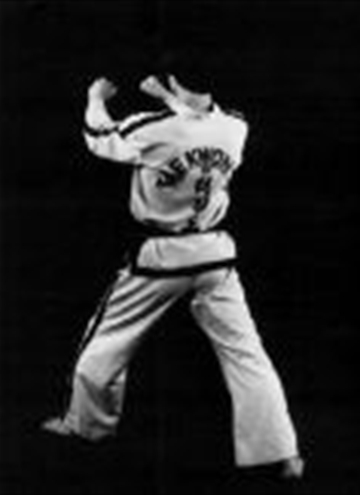 Move the left foot to CE, forming a left walking stance toward CE, at the same time executing a high wedging block to CE with the outerforearm
Move the left foot to CE, forming a left walking stance toward CE, at the same time executing a high wedging block to CE with the outerforearm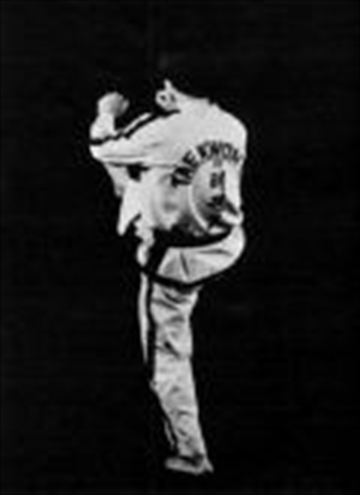 Execute a middle front snap kick to CE with the right foot, keeping the position of the hands as they were in 13
Execute a middle front snap kick to CE with the right foot, keeping the position of the hands as they were in 13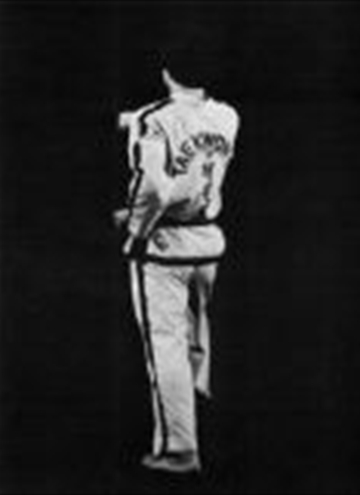 Lower the right foot to CE, forming a right walking stance toward CE while executing a middle punch to CE with the right fist
Lower the right foot to CE, forming a right walking stance toward CE while executing a middle punch to CE with the right fist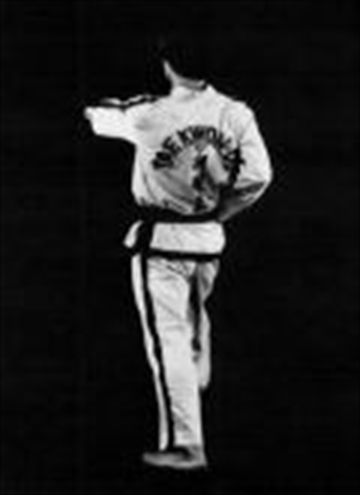 Execute a middle punch to CE with the left fist while maintaining a right walking stance toward CE. Perform 15 & 16 in fast motion
Execute a middle punch to CE with the left fist while maintaining a right walking stance toward CE. Perform 15 & 16 in fast motion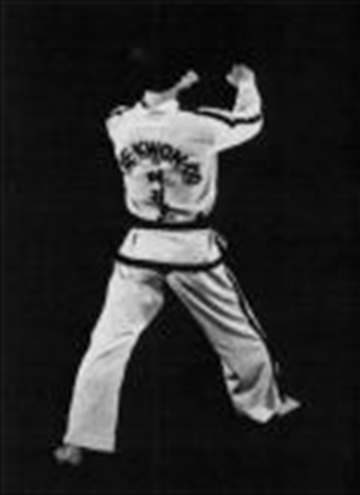 Move the right foot to CF, forming a right walking stance toward CF while executing a high wedging block to CF with the outer forearm
Move the right foot to CF, forming a right walking stance toward CF while executing a high wedging block to CF with the outer forearm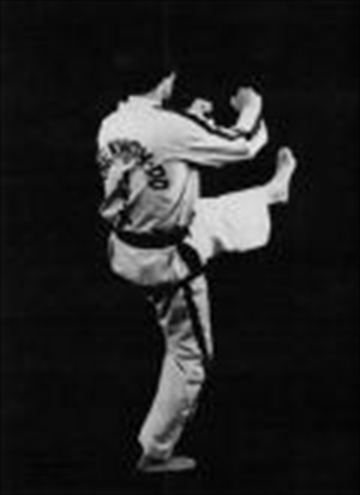 Execute a middle front snap kick to CF with the left foot, keeping the position of the hands as they were in 17
Execute a middle front snap kick to CF with the left foot, keeping the position of the hands as they were in 17 Lower the foot to CF, forming a left walking stance toward CF while executing a middle punch to CF with the left fist
Lower the foot to CF, forming a left walking stance toward CF while executing a middle punch to CF with the left fist Execute a middle punch to CF with the right fist while maintaining a left walking stance toward CF. Perform 19 & 20 in fast motion
Execute a middle punch to CF with the right fist while maintaining a left walking stance toward CF. Perform 19 & 20 in fast motion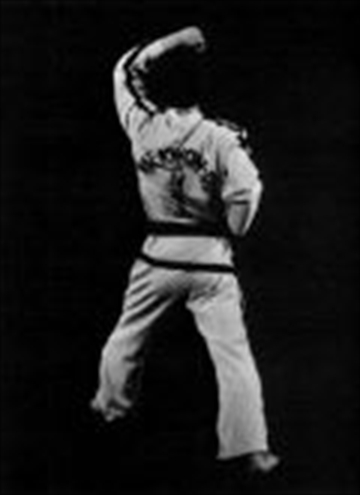 Move the left foot to C, forming a left walking stance toward C, at the same time xecuting a rising block with the left forearm
Move the left foot to C, forming a left walking stance toward C, at the same time xecuting a rising block with the left forearm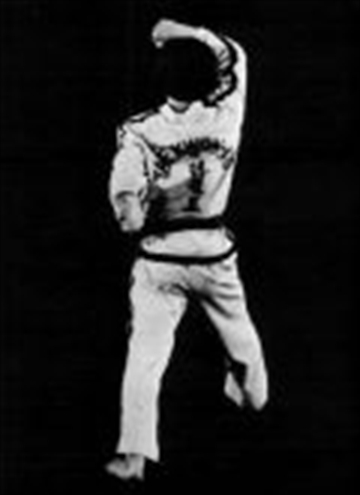 Move the right foot to C, forming a right walking stance toward C while executing a rising block with the right forearm
Move the right foot to C, forming a right walking stance toward C while executing a rising block with the right forearm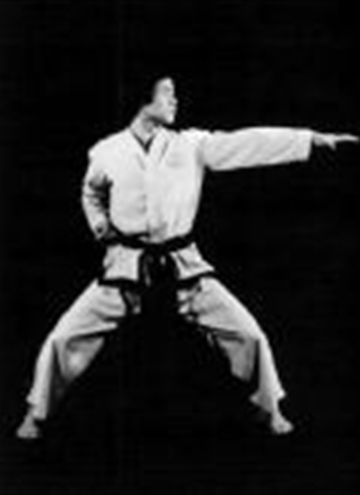 Move the left foot to B, turning counter clockwise to form a sitting stance toward D while executing amiddle side strike to B with the left knifehand
Move the left foot to B, turning counter clockwise to form a sitting stance toward D while executing amiddle side strike to B with the left knifehand Bring the left foot to the right foot, and then move the right foot to A, forming a sitting stance toward D while executing a middle side strike to A with the right knifehand
Bring the left foot to the right foot, and then move the right foot to A, forming a sitting stance toward D while executing a middle side strike to A with the right knifehand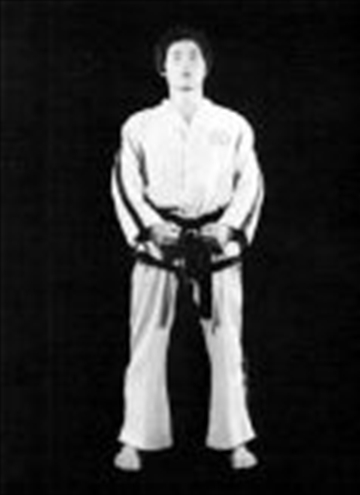 Bring the right foot back to the ready posture
Bring the right foot back to the ready posture
Pattern Videos
Saju Jirugi, Saju Magki and Chon-Ji.
Rare International Tae Kwon-Do (ITF) video produced by General Choi.
You can see Grand Master Park Jung Tae, Grand Master Choi Jung Wha and other masters of the ITF performing tuls and explaining the movements of each Tul.
The history of Do-San
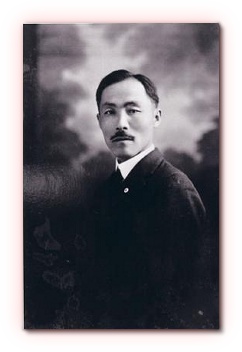 An Chang-ho, or Ahn Chang-ho, pen name Dosan, (November 9, 1878 – March 10, 1938) was a Korean independence activist and one of the early leaders of the Korean-American immigrant community in the United States. He established the Young Korean Association and was a key member in the founding of the Provisional Government of the Republic of Korea in Shanghai. He was also the father of Hollywood actor Philip Ahn.
An Chang-ho, or Ahn Chang-ho, pen name Dosan, (November 9, 1878 – March 10, 1938) was a Korean independence activist and one of the early leaders of the Korean-American immigrant community in the United States. He established the Young Korean Association and was a key member in the founding of the Provisional Government of the Republic of Korea in Shanghai. He was also the father of Hollywood actor Philip Ahn.
Early Years
Ahn was born in 1878 in Kangso, Pyeongan province, in present-day South Pyongan, North Korea. In 1896, Ahn moved to Seoul,and attended Gusae Hakdang, a missionary-sponsored school, and converted to Christianity over a period of four years.
Immigration to America and Later Years
In 1902, Ahn came to San Francisco with his wife Helen in order to get a better education. While living in California, he witnessed two Koreans fighting in the streets over sales turf. Ahn was apparently upset by this display of incivility among his countrymen overseas, and he began to invest time into reforming the local Korean diaspora, rising to become one of the first leaders of the Korean-American community.
He founded the Friendship Society in 1903, the first Korean organization in the continental United States. In 1906, he established the Mutual Assistance Society (MAS). MAS would eventually merge with the United Korean Society in Hawaii to become the Korean National Association, the official agent of Koreans in the United States until the end of World War II.
Many consider Ahn Chang-ho to be one of the key moral and philosophical leaders of Korea during the 20th century. In the turmoil immediately before and during the Japanese occupation of Korea, he called for the moral and spiritual renewal of the Korean people through education as one of the important components in their struggle for independence.
In 1938, Japanese authorities arrested Ahn, but due to severe illness, he was released on bail and transferred to the Kyungsung University hospital where he died on March 10, 1938. A memorial park and hall were built to honor him in Seoul. Another memorial was built in downtown Riverside, California to honor him. The Taekwondo pattern Do-San was named after him.
 1
1 2
2 3
3 4
4 5
5 6
6 7
7 8
8 9
9 10
10 11
11 12
12 13
13 14
14 15
15 16
16 17
17 18
18 19
19 20
20 21
21 22
22 23
23 24
24 25
25 26
26
